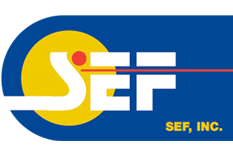
Printing ink is an oil based paste that contains colorants, binders, and other additives such as driers, and surfactants. The additives in ink help to control its viscosity, appearance when it is dry, and the time the ink takes to dry. The oil in ink may be plant based, for example soy ink, or petrochemical based. Business form printing is most often done using spot colors. Each color is printed as a pure color. It is not a combination of colors, making up a gamut of colors, as in process printing (CMYK).
The Pantone Matching System® (PMS)

The Pantone Matching System® (PMS) allows ink to be specified with great accuracy. Many years ago it was difficult to explain to a printer exactly what shade of red that you wanted printed on your forms. Enter the Pantone Matching System®. Now you simply tell the printer that you want PMS 185 as your red, he orders PMS 185 from his ink supplier or mixes it according to the formula in the color guide, and you have the assurance that the red printed should be reasonably close to the color you specified. There are other matching systems, but the Pantone Matching System® is the one most often used by printers of business forms. Click Here to go to the Pantone Matching System® website.
Standard Colors
Most printers have a number of colors that are called standard colors. These inks are always in stock and usually are cheaper than inks that must be special ordered. For instance, at SEF, Inc., PMS 347 is a standard color. If your customer wants a green form or area of green, say in the logo, then it will be cheaper to use PMS 347 than to order PMS 357. Although this does limit the variety of colors available, it also allows for the use of color in a more cost effective manner than is possible with the ordering of special inks.
SEF, Inc., Standard Colors:
Black
PMS 185 Red
PMS 199 Red
PMS 347
Process Yellow
Process Blue
Reflex Blue
PMS 423 Gray
PMS 427 Gray
MICR (Magnetic Ink Character Recognition)
MICR ink has iron oxide particles added during the manufacturing process. This addition allows the magnetic heads of the document processing equipment to accurately identify the characters of the E13B font. Prior to the introduction of MICR ink encoded documents, banks sorted checks and other documents manually. This process was both time consuming and costly. During the 1950’s, through the joint efforts of the Stanford Research Group and General Electric Computer Laboratory, the process was automated by the utilization of MICR ink and the E13B font. This combination allowed the encoded documents to be sorted quickly and efficiently by machines able to read the magnetic image produced.
E13B Character Set
Desensitizing Ink
Desensitizing ink is made up of special clays and other compounds that deactivate the reaction of carbonless papers to the dyes being released from the paper by pressure being applied. The desensitizing ink allows you to have areas of a form that do not transfer from part to part. This acts much like pattern carbon, in that it allows you to have only certain areas of a form transfer from part to part.
